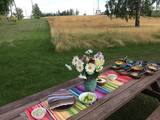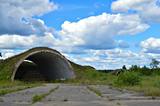| Нo | Название | Описание |
|---|---|---|
|
This is the longest of the Forest Trail tours, where you will hike on many beautiful forest nature trails in Latvia and Estonia. These nature trails are part of the Forest Trail and this tour is suitable for self-drive tourists, who wish to hike different sizes of trails and get an impression of the forest diversity in both countries. You have the possibility to see the northern coniferous forests with spruces and pines, broadleaf forests, wet floodplain forests and picturesque forests growing on slopes and ravines. You will also see the most interesting tourist sights in Latvia and Estonia, which are close to the Forest Trail. In Latvia you will visit Sigulda, the historic Ligatne papermill village, medieval Cesis, the River Amata valley, which is located in Gauja National Park. Then you will drive to the less populated eastern part of Latvia – the Northern Gauja protected landscape area, Aluksne Town and hike in the Korneti-Peļļi subglacial depression, one of the most impressive ravines in Latvia. You can climb to Drusku castle mound – the highest and steepest of all the castle mounds in Latvia, When entering Estonia, you will see the highest point of the Baltics – Suur Munamagi Hill, where the observation tower is built. Further on the tour will lead you to the River Piusa valley, Obinitsa, with the culture of Seto people. You will hike in the historic Varska resort town, which is very close to the Russian border. Then you will reach Tartu and Lake Peipsi, which is the 5th biggest lake in Europe. You will hike in the Kurtna landscape reserve, see the Ontika limestone cliff, Valaste waterfall – the highest in Estonia. Finally you will hike in one of the beautiful wooded areas in Estonia – Lahemaa National Park. The tour ends in Tallinn, where you can enjoy the medieval Old Town and many other attractions. |
||
|
The park was established to protect the Venta River valley and the landscapes that are around its tributaries. On the west bank of the Venta, at Papilė, there is a cliff from the Jurassic period which is unique in the Baltic States, has been known since 1925, and has layers in which more than 300 forms of life have been identified over the course of time.
|
||
|
Saimniecībā tiek audzētas gaļas šķirnes (Suffolkas) aitas un piena šķirnes (Ostfrīzijas) aitas. Ganāpmulka aizsardzībai saimniecībā strādā ar sargsuņiem, Pireneju kalnu suņiem, kas ir pasaulē arī plaši pazīstama suņu šķirne mājlopu un mājputnu apsargāšanai no lielākiem un mazākiem plēsējiem. Saimnieki piedāvā iegādāties premium klases, saimniecībā audzētu, jēru gaļu un aitu piena produktus- Fetas tipa sieru, grilsieru, jogurtu bez piedevām un vairāku veidu saldējumus. |
||
|
Daugavpils – Krāslavas (A 6) ceļa malā redzamais dievnams uzcelts ar Plāteru dzimtas pārstāvju – Vaclava un Kazimira Plātera atbalstu 1811. gadā. Dievnamu ieskauj metālkaluma un no ķieģeļiem mūrēts žogs, kā arī divi zvanu torņi. Labās puses zvanu tornī karājas vecs zvans. No baznīcas iekārtas ir jāpiemin galvenais altāris, ko rotā Dievmātes skulptūra, trīs biktskrēsli, četras evaņģēlistu sienas freskas un Lurdas Dievmātes glezna. Ikdienā apskatāma no ārpuses. |
||
|
Ремесленник из прутьев делает стулья, столы, а из дерева – всякие полезные в хозяйстве и практические вещи. Экскурсия, осмотр деревянных скульптур и ухоженного хозяйства. |
||
|
This is the thickest European Ash (Fraxius excelsior) in Latvia and the Baltic States. The homestead where the tree is found is the memorial museum of the painter Ģederts Eliass, and for that reason, the tree is sometimes also known as the Eliass ash tree.
|
||
|
Dievnamu (atrodas Skujenes – Vecpiebalgas ceļa malā) 1872. g. cēla pirmais izglītotais latviešu arhitekts Jānis Frīdrihs Baumanis (1834. – 1891.), kas ir vairāku pazīstamu celtņu – J. Vītola Mūzikas akadēmijas, Rīgas cirka, Valsts bankas u.c. ēku projekta autors. Padomju laikā Māļu baznīcā atradās tukšās taras pieņemšanas punkts, bet mūsdienās – saglabājies tikai ēkas ārējais veidols. Baznīca apskatāma arī no iekšpuses. |
||
|
No Vecās pasta ēkas ir redzama Sv. Jāņa kolonna. Domājams, ka tā celta 17. gs. un sākotnēji kalpoja kā blakus esošā tirgus laukuma „ziņojumu vieta”. Vēlāk kolonnu pārdēvēja Sv. Jāņa - zvejnieku aizbildņa vārdā, jo daudziem Traķu apkārtnes iedzīvotājiem zveja bija ikdienas dzīves sastāvdaļa. |
||
|
Кафе со свободной атмосферой в Адажи. С террасы открывается вид на берега реки Вейупе и красивые закаты. В предложении современная мировая кухня: салаты, закуски, супы, сытные основные блюда, бургеры и освежающие напитки. |
||
|
Atrodas Lielajā ielā 34 a. Vēlīnā klasicisma stilā celtā baznīca pēc muižnieka Nikolausa fon Korfa ierosmes būvēta laikā no 1828. - 1830. gadam. Dievnams ir interesants ar to, ka tajā apskatāms Vidzemes sakrālmākslā rets altāra tips – kancelaltāris (kancele un altāris ir apvienoti arhitektoniski vienotā mākslinieciskā kompozīcijā). |
||
|
Находится в Лаши, в 0,2 км от дороги Вецумниеки – Илуксте. Древнее городище селов, заселенное с первоготысячелетиядорождестваХристова до 10 - 12 столетия. В наши дни в городище видны ничтожные остатки комплекса бывшей Вецлашской (Тизенхаузенов) господской усадьбы (внушительный господский дом был построен в конце 19 века в неоготическом стиле), из которого сохранилось хозяйственное строение, фундамент господского дома, фрагменты ворот и парк. До 1920 года господская усадьба принадлежала роду графов Пшездзецких (перед этим - Тизенхаузенам, Фитингхоффам). Перед тем, как отправляться к этому месту, в Интернете стоит найти старинные фотоснимки господского дома. К сожалению, в течение последних 20 лет этот памятник культуры не пережил каких-то значительных работ по благоустройству. |
||
|
Одно из редких предложений в Латгалии, где во время туристической экскурсии гид поет на латгальском языке. Интересный, аттрактивный и познавательный рассказ об исторических событиях, связанных с Прейльской господской усадьбой и городской средой. |
||
|
Банные ритуалы, во время которых банщик, используя веники и чаи из разных растений, помогает укрепить здоровье, освободиться от усталости и стресса, зарядить организм новой энергией. Тело освежается и закаливается. Предлагаются разные виды массажа, очищающие пилинги и маски. |
||
|
По дороге в Турайду определенно следует остановиться у пещеры Гутманя. Это самая широкая (12 м), высокая (до 10 м), с точки зрения объема, и одна из самых огромных пещер (пещерообразная ниша) Латвии, место, имеющее культурно-историческое значение, овитое преданиями (популярнейшее о Турайдской Розе), со старинными надписями, оставленными на стенах и потолке (самые давние относятся к концу XVII в.). Из пещеры вытекает ручей, обладающий целебными свойствами. В месте, где правый коренной берег древней долины Гауи раскалывают несколько глубоких оврагов с мелкими ручьями, стоит Турайдский музей-заповедник с выдающимися памятниками Балтийского масштаба, история которых уходит в далекое 1000-летнее прошлое. Ознакомление можно начать с осмотра Турайдской усадьбы (впервые упомянута в XVI в.), которая служит отличным примером Видземской господской усадьбы. До наших дней сохранилось 21 строение, которые были построены в период с XVIII до начала XX столетия. Посетители могут осмотреть конюшню господской усадьбы, тележный сарай, баню, кузницу, рыбный погреб, клеть, дом старосты, жилой дом управляющего, жилой дом прислуги господской усадьбы, сушилку и др. Следуя в направлении Турайдского замка, подойдем к могиле Турайдской Розы, с которой связана легенда о Турайдской Майе, которая пожертвовала своей жизнью ради любви. Рядом с могилой растет величавая липа (в плохом состоянии), которая как будто бы склоняется над могилой Майи. Стоящая дальше Турайдская лютеранская церковь является третьим подряд храмом и самым старым (1750 г.) памятником деревянного зодчества в Латвии – односекционный деревянный сруб с башенкой в стиле барокко. Здесь представлен к осмотру алтарь и кафедра (середина XVIII в.), алтарная икона «Голгофа» (конец XVII - начало XVIII вв.) и историческая экспозиция. На Горе Дайн раскинулся Парк народных песен, создание которого началось в 1985 году, отмечая 150-летний юбилей отца латышских дайн - Кришьяниса Баронса. В настоящее время в парке установлено более 26 каменных скульптур, созданных скульптором И. Ранка. Ежегодно здесь проводятся фольклорные мероприятия. Перед строительством каменного Турайдского замка (началось в 1214 г.) на его месте находился построенный из дерева замок ливов. Турайдский замок принадлежал Рижскому епископу. Он простоял очень долго - вплоть до 1776 года, пока не сгорел. В 1953 году здесь развернулись масштабные реставрационные работы по восстановлению верхний этаж Главной башни, здания клети (экспозиция о Сигулдском крае), полукруглую башню и южный корпус комплекса замка. Теперь в помещениях замка создана экспозиция музея, рассказывающая об исторических событиях окрестностей. |
||
|
Ičas apmetnes ciems ir sena dzīvesvieta Ičas upes krastos. Apmetne atklāta 1937. gadā. Tā bijusi apdzīvota neolītā (4500 - 1500 pr.Kr.) un bronzas laikmetā (1500 - 500 pr.Kr.). Apmetnē dzīvojuši amatnieki, zvejnieki, mednieki.
|
||
|
Усадьба Астрава представляет собой один из ярчайших образцов литовской архитектуры в стиле романтизма XIX в. Она находится в Астраве, на полуострове озера Ширвена. До нее легко добраться пешком из Биржай по самому длинному в Литве деревянному пешеходному мосту через озеро Ширвена. Парк площадью 18 га смешанной планировки был здесь разбит в 1851–1862 гг. В парке растут местные растения: ели, сердцевидные липы, сосны. |
||
|
Ceļa malā, kas ved uz Kärdla pilsētu, ir zivju pārstrādes veikals, kur iespējams iegādāties Hījumā zvejnieku nozvejotas zivis gan svaigas, gan kūpinātas, kā arī tiek pārdoti Hījumā mazo ražotāju produkti. Zivis iespējams nobaudīt arī turpat uz vietas, veikalā ir kafejnīcas stūrītis, bet vasarā ārpusē ir terase.
|
||
|
Аэродром в Вайнёде в свое время был одним из крупнейших военных аэродромов Советской армии в странах Балтии. Однако, еще до этого, во времена Латвийской свободной республики здесь базировались первые латвийские дирижабли. Ангары для дирижаблей были снесены и перемещены в Ригу, в которых в наши дни находится Рижский центральный рынок. С аэродрома в Вайнёде поднимались и одни из первых латвийских планеров. В советское время на аэродроме базировался 27-й полк противовоздушной обороны и 54-й авиационный полк истребителей, в состав которого входили 38 истребителей СУ-27 «Flanker». После восстановления Латвийской свободной республики аэродром в Вайнёде частично разобран, и большие железобетонные панели, покрывающие взлетную полосу и прочую территорию взлетного поля, были использованы для благоустройства Лиепайского порта. Еще сегодня на аэродроме сохранилось около 16 ангаров и часть взлетно-посадочной полосы - 1800 м из 2500 м. Каждый заинтересованный может получить более полную информацию на эту тему в краеведческом музее Вайнёде.
|
||
|
В восстановленном деревянном домике можно наблюдать и участвовать в работе ткачих, которые из натуральных материалов делают красивые сувениры и пригодные в домашнем быту вещи. Можно осмотреть 9 станков, послушать рассказ о процессе ткачества. Ткут платки и красят их натуральными красителями. |
||
|
Находится на 22 км шоссе Рига - Лиепая (A 9). Блюда готовятся г.о. из даров леса. Интерьер выполнен в тематике охотничьего промысла. Рядом размещен загон с ланями. Латышская кухня: Жаркое из косули, жаркое из кабана, стейк из оленьего окорока, жаркое из баранины, фаршированная ручейная форель. |
||





















